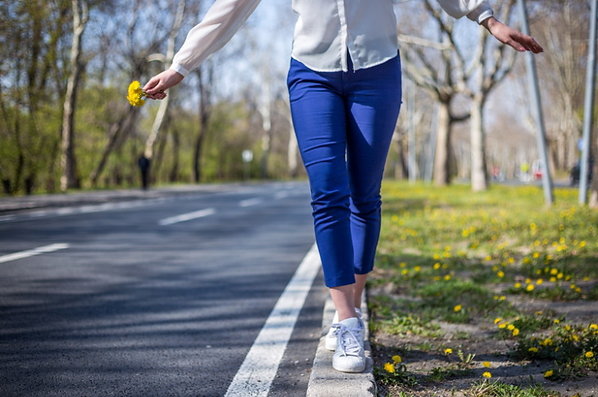Don't Fall For This Common Misbelief About Balance

Last month’s newsletter on stretching was a big hit! It got a lot of people talking about how they had been “stretching wrong” all this time.
This got me thinking about other topics people express a misunderstanding around and BALANCE was easily the first thing that came to mind. It’s common to hear people casually comment that their worsening balance or unsteadiness is just a normal part of getting older.
But guess what, that’s NOT TRUE.
Yes, balance does tend to deteriorate as we get older, but that’s because most people get more and more sedentary at the same time. And when it comes to balance – if you don’t use it, you lose it!
Balance is a lot like any other system in our body. It can weaken and it can get stronger. Things that negatively impact our balance would be becoming less active, adopting a more sedentary lifestyle, joint pain and stiffness in your legs, poor vision, or inner ear dysfunction – just to name a few.
The good news is that your balance can also get better! When people come see us for balance problems I like to explain that balance is composed of three parts. You have VISION, PROPRIOCEPTION, and the INNER EAR. We rely on the strength of this trio to keep our “sea legs” and help us stabilize when we lose our center of gravity.
To get full clarity, let’s dive a little deeper into each area…
First, let’s tackle VISION. We all rely heavily on our eyes to keep our balance. We have to be able to clearly see obstacles in our path, and judge the distance to them in order to avoid a collision or misstep. Even changes to light are picked up by our eyes. For instance, when it’s dark outside or the lights are dim, our eyes need to adjust for better acuity. If you have poor vision then strengthening the other areas of your balance becomes that much more important.
We do this by positioning you in a stance that creates unsteadiness and then asking you to close your eyes (sounds fun, right?). This forces your body to use the proprioceptive and inner ear systems since you can’t rely on your vision. Make sense so far?
The other areas work in very similar ways. Your PROPRIOCEPTIVE system is composed of tiny receptors you have in your ankles, knees, and hips that constantly communicate to your brain about where your body is in space. Are you standing on a different surface or different height with one leg? We may challenge this by asking you to stand on a squishy cushion, or position your body in various directions.
Lastly, we have the INNER EAR which help us maintain our equilibrium and communicates with the brain about where our head is in relation to gravity. It tells the brain if we’re moving or stationary and the direction of movement.
A problem with your balance means the potential for FALLS, and nobody wants that! Remember, your balance can get better – it just takes practice. If you’re noticing trouble with your balance, give us a call and see how we can help!
